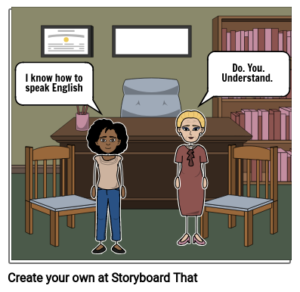Proposal
Jessica, Amanda, Erin
We are completing our final project on Gender and Generation Roles. As we continue further research on this topic, we know that gender and generation roles is a conflicting topic within our society as well as outside of the United States. In this case, Nigeria. In some ways it has lightened up a bit. Even though we are all brought up differently, we all still face similar gender roles. And these roles are affected by future generation and social roles as well.
Let’s start with generation roles. We definitely see generation roles in Nigeria and the United States. In Nigeria, there is more structured parenting, meaning children can’t be disrespectful in any way. And they are more likely to listen to what their parents ask of them. If they disobey, the children get physical punishment. In the United States, parents are more lenient with their children. This isn’t necessarily a good thing because children then become rebellious. On the other hand, children are more allowed to have their own ideas/dreams despite what their parents want for them.
Now onto gender roles. Keep in mind, gender roles are “the role or behavior learned by a person as appropriate to their gender, determined by the prevailing cultural norms” (Lumen Learning). For example, in Nigeria, women are “expected to plan office parties because it’s a ‘woman’s job’…..As a woman, I am expected to make my own meals…”(Samiha Nettikkara). In America, women are “nurturing, caring, social, emotional” (Treleaven 1). They were also caretakers . Men were considered “aggressive, instinctual, private, promiscuous”(Treleaven 1). They were also the breadwinners of the family.
With all of this being said, for our group project we are going to use the scene from chapter 5 of Chimamanda Ngozi Adichie’s Americanah. In this scene, we can see gender roles from when Ifemelu was shocked when she found out that Aunty Uju didn’t have her own money because the General refused to let her handle the money. This also shows generation roles because men are considered responsible for going out to work and handling money. For the visual aspect of this project, we are doing a storyboard comic. We thought this would be a great way to show the chosen scene from Americanah because we thought it would be a fun way to show visual representation of the gender/generation roles from the Nigerian aspect, specifically in Aunty Uju’s case.
“Gender Roles in the U.S.” Lumen Learning. https://courses.lumenlearning.com/cochise-sociology-os/chapter/gender-roles-in-the-u-s/
Treleaven, Christina. “Gender, Generation, and Jobs: Differences in Gender Role Ideologies by Age and Occupation”, 2015. https://ir.lib.uwo.ca/cgi/viewcontent.cgi?article=1001&context=sociology_masrp
Nettikkara, Samiha. “What it Means to be Female in Nigeria”. BBC News, 1Jul, 2015. https://www.bbc.com/news/blogs-trending-33239356
